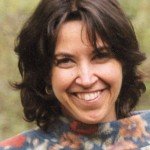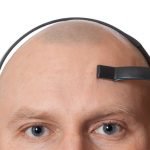The Century-Long Stand for Medical Freedom
Sussanna C. Czeranko, ND, BBE
Our restrictive, exclusive medical legislation is monopolistic and unconstitutional. It is class legislation, and as such is un-American. When a set of doctors secure the passage of laws to restrict competition and to monopolize the healing art, that is class legislation and should have no place in this free country of ours.
-A. Erz, 1914, p. 230The medical trust is so organized that it is endeavoring to rule the world by a high-handed power, pertaining to have the interest of the public at heart, while down deep in their hearts they are like King Herod who slaughtered all the children of Israel so that a new King should not spring up.
-Wallace Fritz, 1915, p. 639We condemn a system which makes medical heterodoxy a social crime.
-Robinson, 1909, p. 117
Many contemporary NDs begin their careers eager to expand awareness of naturopathic traditions and principles. They are often puzzled by the unquestioning support the biomedicine model has garnered in the last century, especially given its great cost and its questionable efficacy in terms of prevention and lifelong wellness. Indeed, the American medical model that has evolved over the last 10 decades is the most expensive one in the world (U.S. Census Bureau, 2011). Consumers, politicians, and healthcare providers all know that the United States spends twice as much on healthcare per capita ($7,164 in 2008) as any other country, and spending continues to increase (U.S. Census Bureau, 2011). The debate about whether this system is worth it and about whether it is sustainable is a major topic in the political arena. The conversation is not just about money, with the uncomfortable realities of insurance access, cost, and profits, or about the unequal controls of health maintenance organizations in identifying and supporting healthcare providers in their capitation areas. There are serious health issues spinning out of this model too. There is evidence that the model is not sustainable and is not good for us—not even close.
The Most Expensive but Not the Best
The United States ranks 43rd among lowest infant mortality rates, down from 12th in 1960 and 21st in 1990 (HealthPAC online, 2012). In 2009, the percentage of Americans without health insurance was 16.7%; that translates into 50.7 million Americans who simply did not have the money for it (U.S. Census Bureau, 2012). Those unfortunate enough to not have insurance may well become one of 18,000 unnecessary deaths every year in the United States attributable to inadequate care. Although America leads the world in spending on healthcare, it is the only wealthy industrialized nation that does not ensure that all citizens have coverage and universal healthcare (Institute of Medicine of the National Academies, 2011).
If the wealthiest nation cannot sustain its medical system, one wonders how less affluent countries manage to create and sustain far more accessible equitable healthcare, not infrequently for free. Yet, Canada, Britain, Australia, New Zealand, and many European countries do just that, predicating their systems on public sector tax models that work well. They provide free healthcare, while in the case of Canada myths about poor service and lack of access abound in U.S. political debate. For more than a half century, the Canadian funding model for national healthcare has kept primary care available for everyone as a basic human right. This is also the case in many other countries, unlike in America, where healthcare is seriously commodified and unstitched from what people really want and need, particularly freedom of choice and relief from rapid, often impersonal, care. If the U.S. medical system had not accumulated into the present dysfunctional drag on the American economy that it has become, spending vast amounts of money would likely never be questioned, yet the allopathic medical model’s track record has been dismal, as the naturopathic profession can attest.
When we review the early 20th century naturopathic journals, we discover an extremely loud commotion about the question of medical freedom, which some contend has been the key catalyst informing the present crisis. For many of the early NDs, the very issue of personal choice in healthcare and the avoidance of professional and pharmaceutical monopoly in health were central to their concerns. They wrote a lot about the absence of democratic and individual choice in health as being a serious and dangerous situation for America. They wanted to know why one medical system became the only official legal medical system. They believed that the medicalizing and legal and regulatory frameworking of health as these took shape were antithetical to American ideals and values. Their consternation is well worth reviewing and is wrapped up in what Erz just before World War I represented as the sincere belief that every American citizen should be placed in a “constitution [that] guarantees individual rights and personal liberty” (1913, p. 444).
Benjamin Rush Wanted Medical Freedom
As the literature of the period attests, these early NDs believed that every American had the right to choose his or her own form of medicine. In 1910, Louis Blumer stated:
We believe that in a country which is called the Land of the Free [his emphasis], we have a perfect right, whenever our health is concerned, to choose any physician, any doctor, regardless of whatever school to which he may belong. (1910, p. 3)
In fact, as we were reminded by Havard in that early literature, Benjamin Rush, one of the signers of the Declaration of Independence “predicted the very condition of medical tyranny which we have today, unless a guarantee of medical liberty was written into the constitution. He was a far-sighted man but his advice was rejected” (Havard, 1919, p. 164). So, what happened?
Despite Rush’s prescient understanding of what lay ahead, laws were passed that created “the National Bureau of Health” (Robinson, 1910, p. 555) with unprecedented powers that would “commit the United States Government to the establishment of a system of medicine, denying to the people the right to determine for themselves the kind of medical treatment they shall employ” (Flower, 1910, p. 486). To secure this National Bureau of Health, the “Owen Bill” eventually proved to be another in a sequence of political maneuvers in this post-Flexner period. Although ostensibly crafted to “protect the public health,” the Owen Bill was in fact “a scheme to clothe three or four schools of medical doctors with a legalized monopoly” (Conrad, 1912, p. 235).
As Zurmuhlen reported, what followed in rapid succession, as part of this strategy of biomedical dominance, was that the medical trust (the jargon used by early NDs to refer to the American Medical Association [AMA]) “hired Senator Owen of Oklahoma to introduce a bill in Congress that will give them a Federal Department of Health” (1912, p. 609). The continuum of consolidating their political power, which many early NDs (Benedict Lust among them) considered a travesty of political manipulation, does not end here. It seemed ludicrous to NDs that as part of this political advantage, and as pointed out by Conrad, the new regulatory and public policy frameworks would make it possible for a state governor who “may know nothing about medicine, [to] appoint from the medical schools a so-called medical board, on whom they confer more arbitrary powers than can be exercised by the Supreme Court of these United States” (1912, p. 235).
National Bureau of Health, a Pretense
Lust warned his colleagues early in this process that in short order the National Bureau of Health was about to be established “under the deceptive and false pretense that they protect the public against quacks and imposters” (1912, p. 230). He and many others argued that the real motivation behind the AMA’s unrelenting campaign was not “so much concerned [with] the protection and welfare of the people as it [was] chiefly interested in the perpetuation of its own system at the expense of the general public” (Erz, 1913, p. 448). How convenient to obliterate the competition and tax the people to build the hospitals and infrastructure. Lust commented: “As long as healing and politics sleep in the same bed, there will be an effort of one class of doctors to wipe out competition through the enactment of unjust laws” (1920, p. 218).
Once the establishment of National Bureau of Health was secure, the state boards of medical examiners were relentless in ensuring the monopoly of the AMA. MacFadden, well known among the early naturopathic profession, warned: “Every practitioner, no matter what his training or method, will be required to conform to the requirements of a State Board of Medical Examiners, appointed by a State or County Medical Society” (1924, p. 313). These state boards also had “the sole right to decide the curriculum of any school or college designed to teach the healing art” (MacFadden, 1924, p. 313).
With the elimination of competition systematically under way and enshrined in a growing medley of national and state legislation, the reach of the AMA became increasingly formidable in civil society, state by state, in regard to public health, professional formation, and licensing of primary care practitioners. Allied healthcare practitioners, such as nurses, were positioned to be subservient. Nonallopathic healthcare professionals were positioned to be obliterated. During these months and years, the naturopathic profession fell further and further behind in similar political machinations and civil and political organization. The monopoly that the medical trust wanted and eventually got was all encompassing. They got dominion of healthcare policy across the spectrum of society, from being the providers of choice in the military to being the authors of the health determinants for schoolchildren. They even got civil authority, from the authenticating of birth and death certificates to the legal sanctioning of marriages. All these privileges and social filaments upset our forebears very much. For example, Lust declared in 1919:
In every avenue of human endeavor we see today the secret, and in many instances the open, working of the American Medical Trust, the A.M.A. In all the lawmaking bodies, federal, state, and municipal, in the boards of health, in the boards of education, in the army and navy departments, their ruling power is supreme and the last word. (1919b, p. 438)
Lust pointed out in many forums: “[T]he medical trust boasts of its ability to declare drugless competitors of other schools criminals, by illegitimate laws obtained under the false pretense to protect the public” (Erz, 1914, p. 230).
After World War I, the AMA forwarded many bills in its campaign, wrapped around what the early NDs considered a pretense to protect the public from the drugless therapists. Lust forewarned his readership: “If these bills pass, it will mean establishing by federal law a system of medicine that has killed more human beings than war, famine, and pestilence combined” (1919a, p. 425). Was Lust, like Benjamin Rush, prescient too? By 1997, almost 1 million iatrogenic deaths were occurring annually in the United States due to medical errors (the actual number is 999,936) (Atkinson, 2011).
The Allopaths Are Frozen in Time
A full century after Lust and his colleagues fought parallel battles in New York and elsewhere, similar contests for a legal role in American healthcare continue for the naturopathic profession. In late January 2012, for example, a team of NDs in Iowa testified before their state legislature to persuade and educate the politicians (Schleich, 2012). They were opposed strongly by the MDs and DOs in that state, who questioned publicly, and with seriously uninformed and biased data in hand, whether NDs were responsible, properly trained, and safe. What NDs in unregulated states and provinces are really doing a hundred years after Flexner is continuing to challenge the ascendancy of the biomedicine profession, offering a contemporary “reality check” for legislators about the monopoly of those orthodox medical professions, in the context not only of the steep critical need for more primary care physicians who will help transform the fractured U.S. healthcare system but also in terms of their very wobbly track record over a dozen decades. In Des Moines, Iowa, the NDs called attention to the misinformation being circulated once again by the allopaths, pointing out successfully how frozen in time they are. Our Iowa colleagues presented the legislature with abundant information about the quality of our applicant pools right through to our graduates and their Naturopathic Physicians Licensing Examinations credentials, our didactic and clinical educational standards, our excellent accreditation record, our burgeoning research activity, and the profession’s leadership in dealing with the shocking chronicity issues facing Iowa and the nation. The Iowa NDs methodically and patiently presented the facts of the naturopathic safety record, in sharp contrast to the iatrogenic record of their detractors.
The threat to naturopathic professional formation, as we know, has persisted for more than a century. Our very best way of dealing with the guild-like attacks of the AMA and its state-based affiliates is to cherish and document the effectiveness of our traditional modalities and to present the reach, range, and vitality of contemporary scope and its track record in many states. We can successfully block our detractors’ efforts to discredit and disestablish us by presenting excellent data and by pointing to our superb record of safety, quality, and growth. When the early NDs were dealing with the same affronts in the medical climate a hundred years ago, the literature of the time reminds us that the medical trust, or the AMA, was busy persecuting and prosecuting the drugless practitioner, ostensibly to “protect the public,” using the same arguments and many of the same tactics as they do today. There are some variations, though. In the next issue of NDNR, we will explore some of the differences that separate the biomedical industry and naturopathy.
 Sussanna Czeranko, ND, BBE a naturopathic physician licensed in Ontario, Canada, and in Oregon practicing since 1994 incorporates “nature cure” approaches systematically into primary care by including balneotherapy, breathing therapy, and nutrition. As the rare books curator at National College of Natural Medicine, Portland, Oregon, she is currently compiling an 11-volume series titled In Their Own Words, based on the Benedict Lust journals published early in the last century. As the founder of the Breathing Academy, a training institute for NDs, she facilitates the incorporation of the scientific model of breathing therapy called Buteyko into their practices.
Sussanna Czeranko, ND, BBE a naturopathic physician licensed in Ontario, Canada, and in Oregon practicing since 1994 incorporates “nature cure” approaches systematically into primary care by including balneotherapy, breathing therapy, and nutrition. As the rare books curator at National College of Natural Medicine, Portland, Oregon, she is currently compiling an 11-volume series titled In Their Own Words, based on the Benedict Lust journals published early in the last century. As the founder of the Breathing Academy, a training institute for NDs, she facilitates the incorporation of the scientific model of breathing therapy called Buteyko into their practices.
References
Atkinson, P. (2011). Table of iatrogenic deaths in the United States. In A theory of civilization (http://www.ourcivilisation.com/index.htm). Retrieved February 11, 2012, from http://www.ourcivilisation.com/medicine/usamed/deaths.htm
Blumer, L. (1910). The revolution in medical practice. The Naturopath and the Herald of Health, 15(1), 1-4.
Conrad, C. F. (1912). Argument against medical legislation. The Naturopath and the Herald of Health, 17(4), 234-238.
Erz, A. A. (1913). Medical laws vs. human rights and constitution. The Naturopath and the Herald of Health, 18(7), 438-472.
Erz, A. A. (1914). Brief 5: Why the Naturopathic Bill—No. 281—should become a law in the state of New York. The Naturopath and Herald of Health, 19(4), 227-250.
Flower, B. O. (1910). Do you want the “Doctors’ Trust” to be able to force its opinions on you? The Naturopath and the Herald of Health, 15(8), 485-486.
Fritz, W. (1915). 639.[AU: PLEASE ADD COMPLETE CITATION.]
Havard, W. F. (1919). For medical freedom. Herald of Health and Naturopath, 24(4), 164.
HealthPAC online. (2012). Health care statistics in the United States. Retrieved February 10, 2012, from http://www.healthpaconline.net/health-care-statistics-in-the-united-states.htm
Institute of Medicine of the National Academies. (2011). Report: Insuring America’s health: Principles and recommendations. Retrieved February 11, 2012, from http://iom.edu/Reports/2004/Insuring-Americas-Health-Principles-and-Recommendations.aspx
Lust, B. (1912). The regulars are regulators. The Naturopath and the Herald of Health, 17(4), 228-230.
Lust, B. (1919a). Editorials: Health (?) bills before Congress. Herald of Health and Naturopath, 24(9), 425.
Lust, B. (1919b). Intolerance of official medicine. Herald of Health and Naturopath, 24(9), 438-440.
Lust, B. (1920). Editorials: The real menace. Herald of Health and Naturopath, 25(6), 217-218.
MacFadden, B. (1929). Medical tyranny in New York. Nature’s Path, 33(2), 42.[AU: THE TEXT SAYS 1924 AND PAGE 313. PLEASE RESOLVE.]
Robinson. (1909). 117.[AU: PLEASE ADD COMPLETE CITATION.]
Robinson, J. T. (1910). The National Bureau of Health. The Naturopath and the Herald of Health, 15(9), 555-556.
Schleich, D. (2012). Presentation to the Iowa Senate and House of Representatives Subcommittees on HSB 570, 80th General Assembly (January 25, 2012) (testimony of David Schleich, PhD).
U.S. Census Bureau. (2011). Table 133: Health services and supplies—per capita consumer expenditures. Retrieved February 10, 2012, from http://www.census.gov/compendia/statab/2011/tables/11s0134.pdf
U.S. Census Bureau. (2012). Income, poverty and health insurance coverage in the United States: 2009. Retrieved February 10, 2012, from http://www.census.gov/newsroom/releases/archives/income_wealth/cb10-144.html
Zurmuhlen, C. (1912). The fight for medical freedom against the allopathic trust. The Naturopath and the Herald of Health, 17(9), 609.







